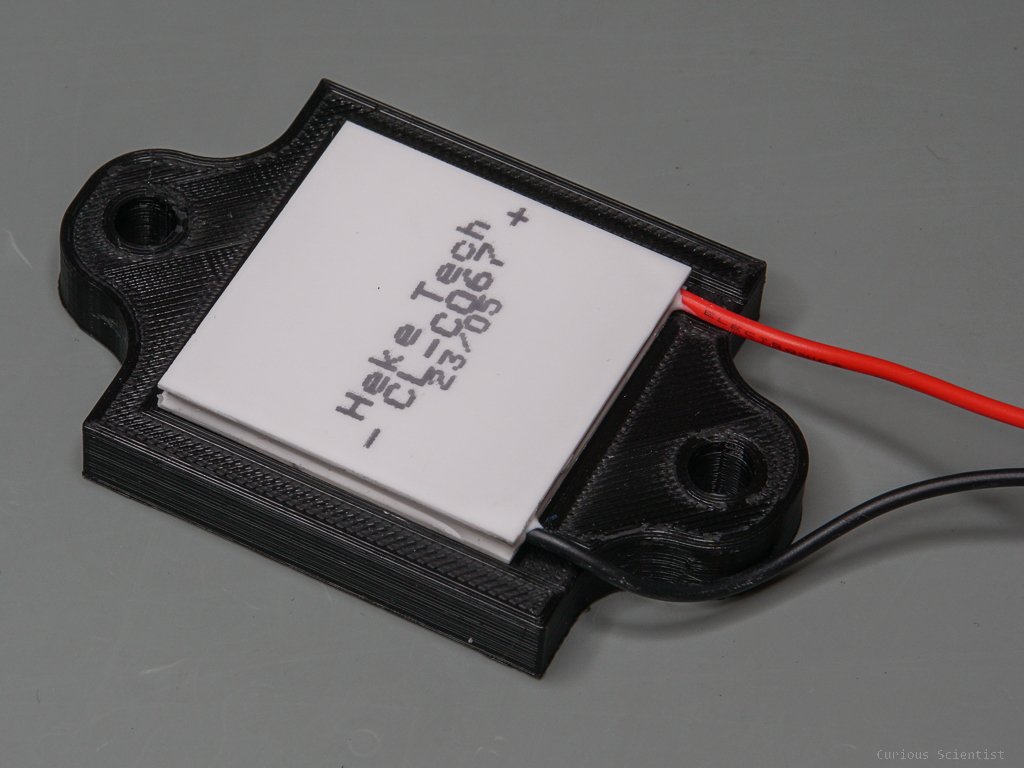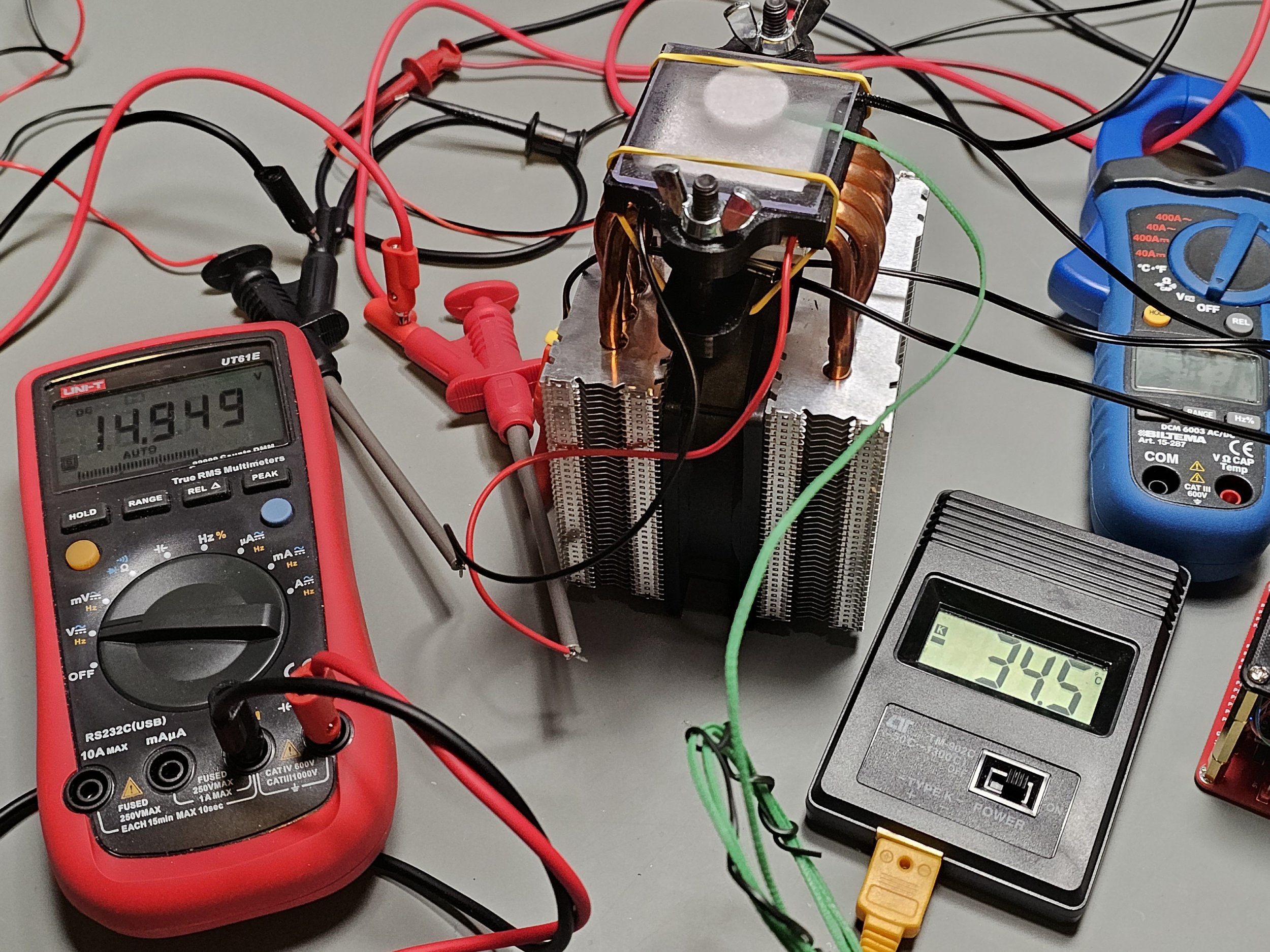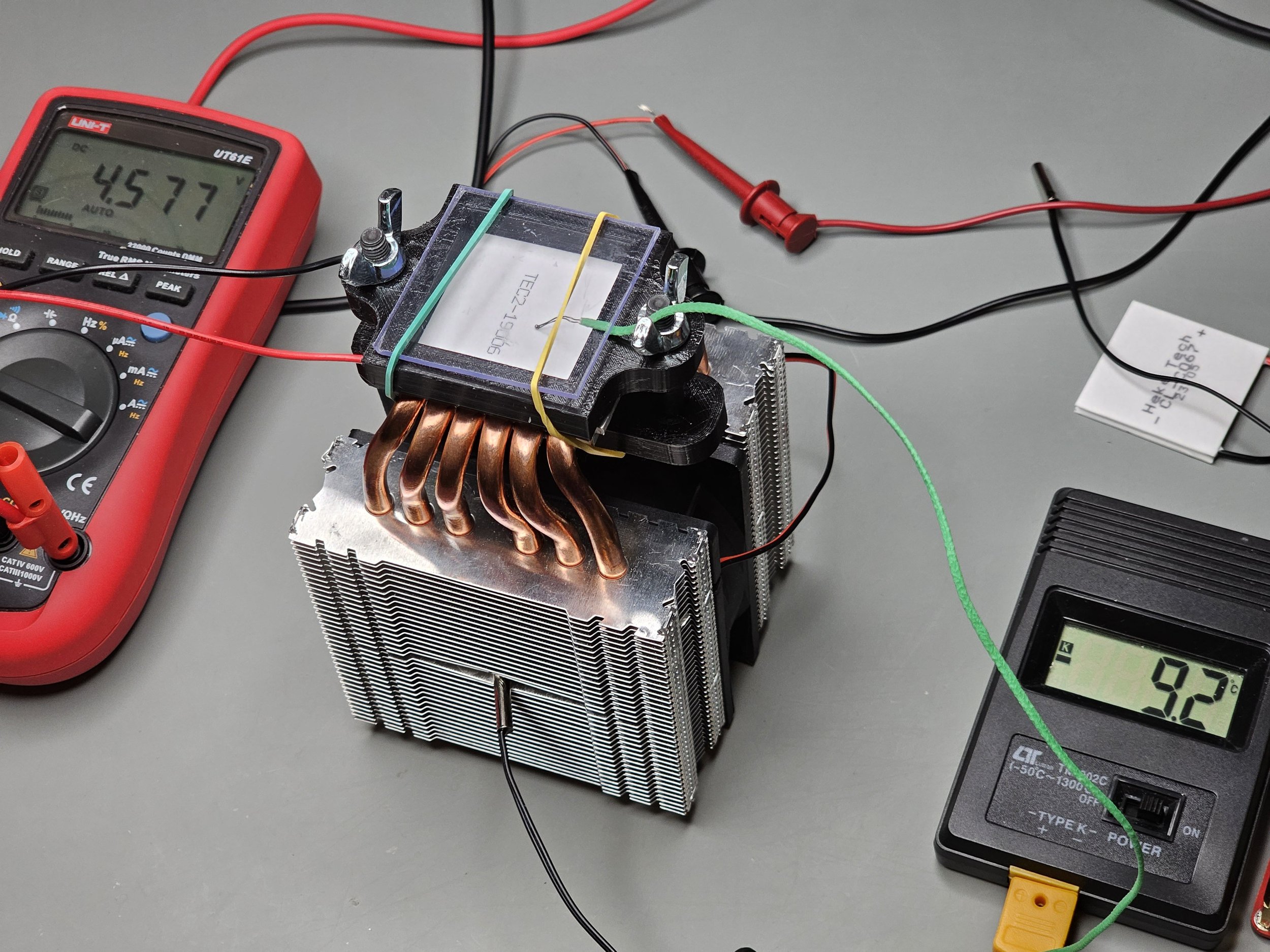Testing two powerful Peltier coolers
In this video, I am testing two new Peltier coolers. I was looking for some powerful coolers for an upcoming project and I found two with interesting parameters. I was looking for coolers that can produce very large temperature gradients between their hot side and cold side.
I found two promising candidates, the TEC2-19006 and the Heke Tech CL-C067. Based on their product description on the internet, they can go below -35°C without any problems which is just perfect for my requirements. However, most of the available information about these coolers is quite vague. I could not find any datasheets for any of these two coolers, or tests where their performance is characterized. As I will show in the video, one of the coolers’ data is also probably “falsified”.
Since there is a lack of information on these coolers, I decided to characterize them myself. Hopefully, it will help other people to decide whether these coolers are suitable for their application or not.
Some interesting details
Let’s first start with the TEC2-19006 unit because it has a bit better information on the internet. I tried to find a proper datasheet for it with performance charts, but I could not locate any.
So, this unit is a “double-decker” Peltier cooler. It is two Peltier coolers sandwiched together. This implies that it has a relatively low heat transferring capability (Qc), but a higher temperature difference (dT) between the hot and cold sides. By looking at the available data, the maximum operating current is 6 A and the maximum operating voltage is 16 V. So, by looking at these characteristics, this is a similar Peltier cooler than the TEC1-12706. However, when we look further, we see that the cooling power is only 36 W (The TEC1-12706 is around 55 W). The dT is stated to be larger or equal to 80°C, which is about the same as the TEC1-12706 (65-75°C, depending on the hot side temperature).
The other product is the Heke Tech CL-C067. It is even more difficult to gather information about this device, so I mainly rely on the product descriptions on the internet.
The main detail that caught my attention is that they advertise the device with a picture where the CL-C067 is compared with the TEC-12715. And while the TEC-12715 only reaches -25.9°C on its cold side, the CL-C067 goes down to -35.1°C. Nearly 10 degrees lower! Other pictures showed temperatures at -36.2°C. So, it can definitely reach better dT than the "regular” Peltier devices (typically -23°C to -25°C, with an air-cooled hot side). On top of this, the device is said to be a 70 W device, so again, we have a similar set of parameters as a TEC1-12706 (~12 V, 6 A). But since it can produce a large dT, I assume that the heat that it can transfer from the cold side to the hot side is also lower.
Unfortunately, as we will see in the comparison, this Heke Tech device probably has “falsified” data published. In the pictures I found on the internet, they state that the cold side could go down even as low as -36.2°C. I did my experiment twice, and I could not reach lower than -26°C. This is 10 degrees lower than the temperature shown in the sellers’ pictures.
I suspect the following trick. In the pictures they show with the thermometer, they cool the hot side with water. This is not too special so far, however, they could have filled up the water cooling loop with already cold water. This would mean that for some time, the hot side would be cooled with below-room-temperature water. Due to this, the cold side temperature is also shifted downwards with the same amount as the difference between the room temperature and the water temperature. So, if they filled up the water loop with 15°C water, they would gain 10°C difference on the cold side too. Guess what, this would explain the almost exactly 10°C difference between my results and the other people’s results.
Comparison of the two Peltier coolers
The Peltier coolers were tested in similar conditions. They were mounted on the same CPU cooler with the same amount of thermal grease applied between the cooling interface of the CPU cooler and the hot side of the Peltier cooler. The Peltier coolers were clamped down with similar force with a unique, 3d-printed clamp. The CPU cooler was cooled with a regular 8 cm, 12 V, 0.3 A fan. The temperature of the cold side was monitored with the same K-type thermocouple thermometer.
The powering of the coolers was done in a “current control” mode. I set the power supply’s voltage to nearly maximum, then I started to slowly increase the current until I reached 0.5 A. After reaching 0.5 A, I waited about 3-5 minutes to let everything equalize and noted down the values. Then I increased the current by 0.5 A again, waited 3-5 minutes again, and then I continued until I reached 6.0 A, the maximum rated current of these devices.
Just for fun, I added the measurement data of a TEC1-12706 from my earlier experiments.
The first graph I created is a current vs. cold side temperature graph. It is clearly visible that the TEC2-19006 performs significantly better. It has about an 8°C lower minimum temperature than the Heke Tech Peltier cooler. This chart is also an important one because it helps us to find the sweet spot of a given setup. I used the word setup because we need to consider the cooling of the hot side too. The system would behave differently with a different cooler. The sweet spot is the current where we reach the lowest possible temperature on the cold side. It seems that for the TEC2 and the Heke Tech coolers, it is around 5 A, and for the TEC1, it is around 4.5 A. Further increasing the supply current would not be beneficial because the Joule heat would overpower the Peltier cooling. Actually, this is even visible on the graphs. Above 5 A, the temperature starts to rise as the current is increased.
Another chart I created is the power consumption vs. cold side temperature chart. This is basically the same chart as I showed above, I just multiplied the current by the voltage. So, the trends are exactly the same as previously, however, we can understand a bit more about these coolers.
For example, we can see the sweet spot of the cooler from a bit different perspective. Now we can see the consumption in Watts. Above roughly 60, further power won’t make the cold side colder. Even if we throw 50% more power at the Peltier coolers, the cold side stays at the same temperature, or even worse, it becomes warmer.
Current vs. cold side temperature. Just as a comparison, I added my earlier test data of a TEC1-12706.
Power vs. cold side temperature. Just as a comparison, I added my earlier test data of a TEC1-12706.
Some additional information
Please use my affiliate links to buy the relevant products!
HEKE Tech CL-067 Peltier cooler
K-type thermocouple thermometer
Join my YouTube membership!
Don’t have a 3D printer? No worries, use my PCBWay referral link and get your clamp printed by PCBWay!






